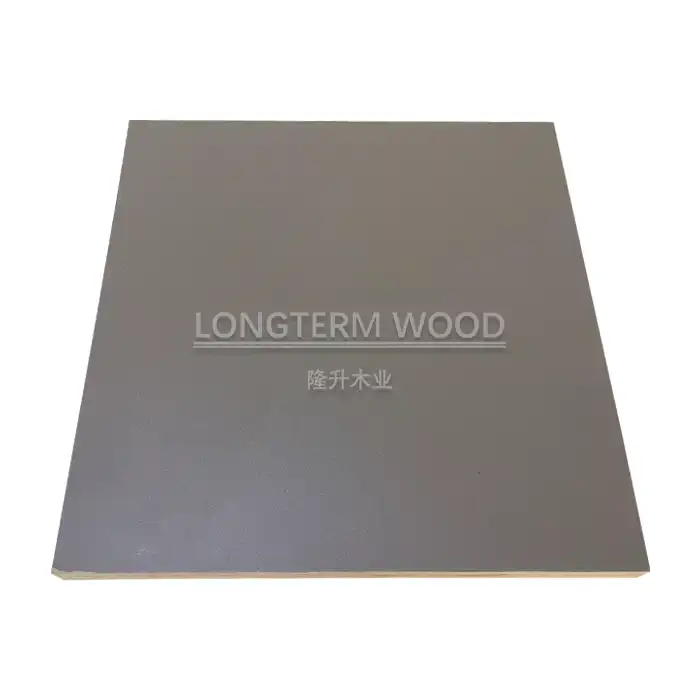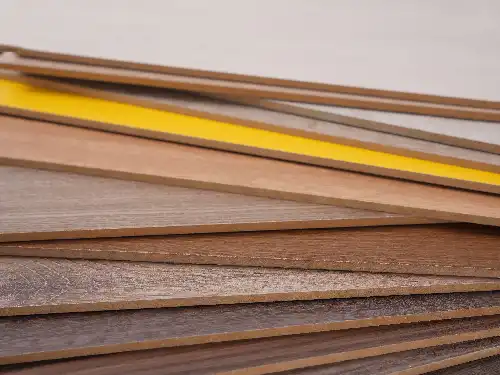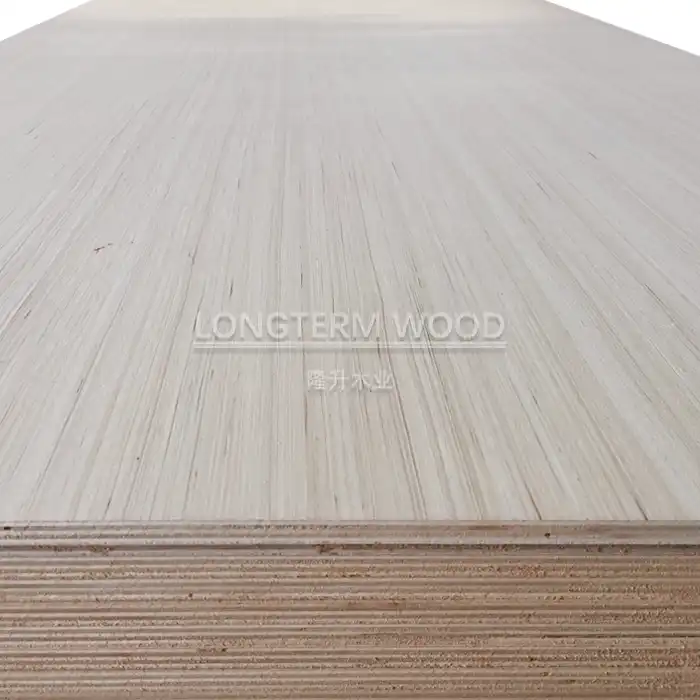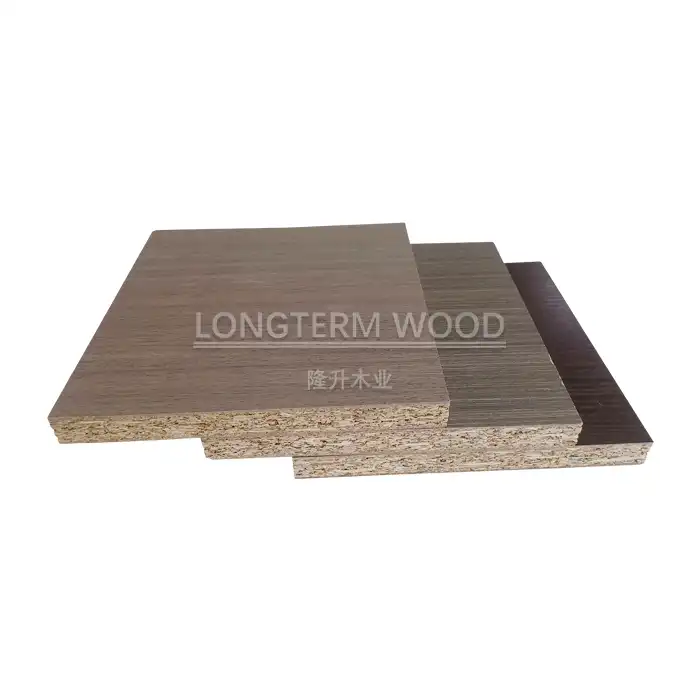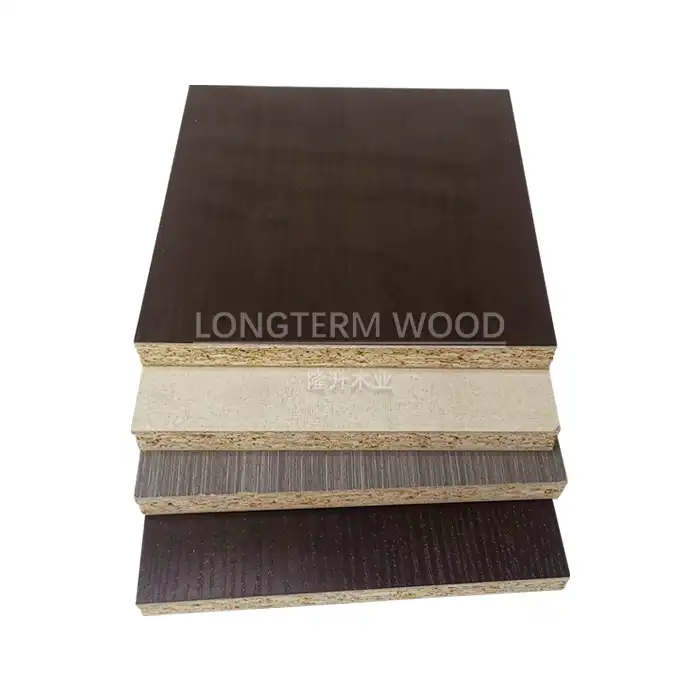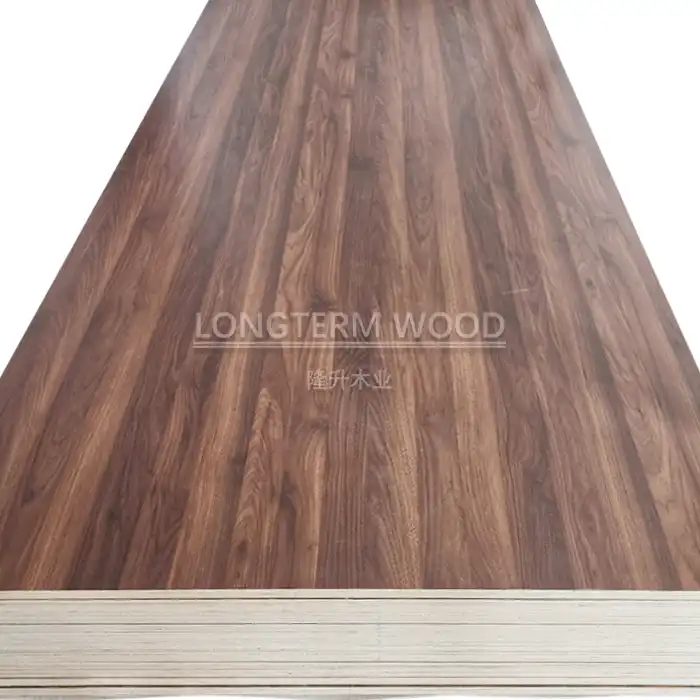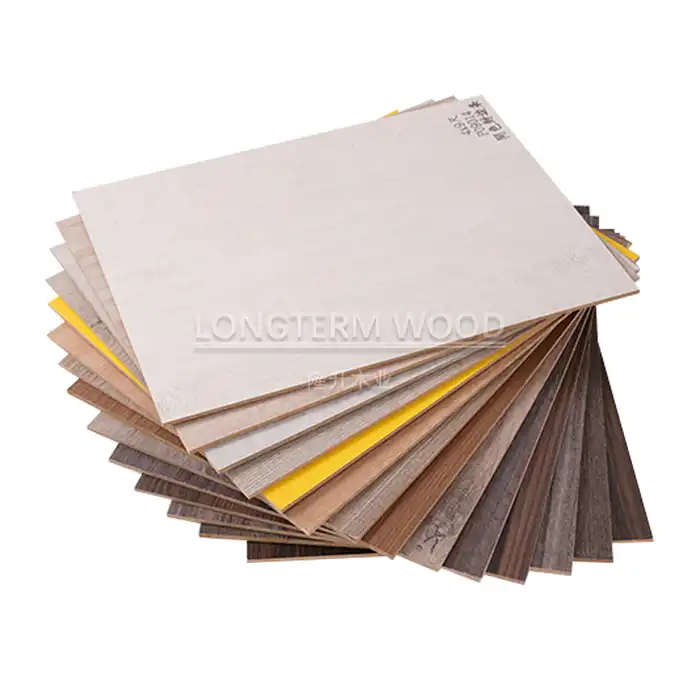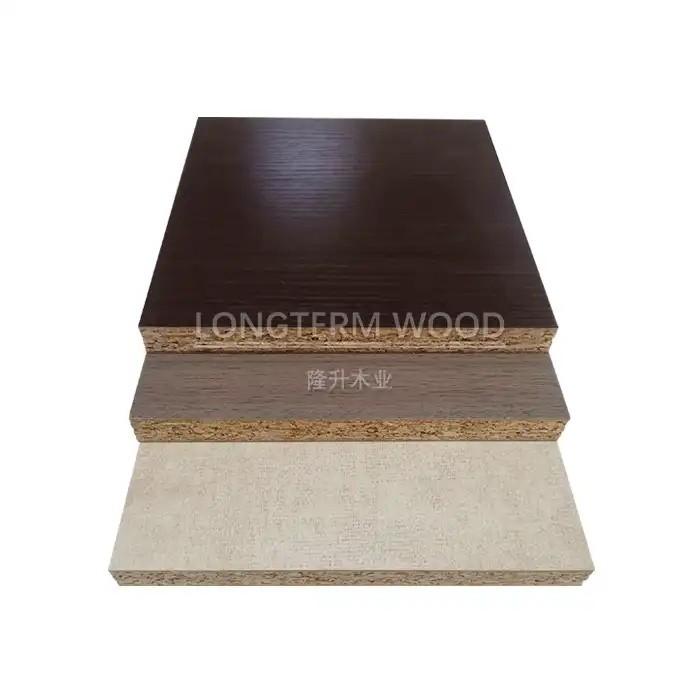
How Does Melamine Plywood Maintain Structural Integrity?
2025-05-09
Melamine plywood stands as a cornerstone in modern construction and furniture manufacturing, renowned for its exceptional durability and versatility. This engineered wood product combines the structural advantages of traditional plywood with the protective benefits of melamine resin coating. The question of how melamine plywood maintains its structural integrity over time is of paramount importance to architects, interior designers, and manufacturers alike. This blog explores the complex interplay of manufacturing techniques, material composition, and protective features that contribute to melamine plywood's remarkable stability and longevity in various applications.
Melamine plywood maintains its structural integrity through a sophisticated combination of engineered core materials, advanced bonding techniques, and protective surface treatments. The multilayer construction creates exceptional dimensional stability, while the melamine resin coating forms a durable barrier against moisture, impacts, and daily wear. This synergistic relationship between core and surface protection ensures that melamine plywood remains structurally sound even in challenging environments. The manufacturing process, which includes precision hot-pressing and quality control at every stage, further enhances the material's inherent strength and resistance to deformation, making it an ideal choice for demanding applications.
Core Construction Techniques for Enhanced Stability
Multi-Directional Veneer Layering
The foundation of melamine plywood's structural integrity begins with its core construction. At Linyi Longterm Wood Industry Co., Ltd., our manufacturing process involves the careful selection and arrangement of wood veneers in alternating grain directions. This multi-directional layering technique is fundamental to creating a balanced and stable core structure for melamine plywood. Each layer is positioned perpendicular to adjacent layers, distributing stress evenly throughout the board and preventing warping or twisting under load. The number of layers directly correlates with the board's strength—typically ranging from three to thirteen plies depending on the intended application. For high-stress environments, we recommend thicker constructions with more layers to provide enhanced load-bearing capacity. This engineering approach significantly reduces the natural tendency of wood to expand and contract with humidity changes, a critical factor in maintaining the structural integrity of melamine plywood over time. Our quality control teams meticulously inspect each layer during assembly to ensure proper alignment and bonding, eliminating weak points that could compromise structural performance.
Advanced Adhesive Technologies
The adhesive system employed in melamine plywood production plays a crucial role in maintaining structural cohesion between layers. Modern melamine plywood utilizes advanced phenol-formaldehyde or urea-formaldehyde resins that create exceptionally strong molecular bonds between wood veneers. At Linyi Longterm Wood Industry, we've invested in eco-friendly adhesive formulations that not only meet stringent E1 and E0 emission standards but also provide superior bonding strength compared to conventional glues. The application process involves precise control of adhesive spread rates—too little compromises strength while excess increases weight and production costs without additional structural benefits. Our specialized hot-pressing technique applies controlled heat and pressure to activate the adhesive's chemical bonding properties, creating permanent cross-linked polymer structures within the wood matrix. This results in melamine plywood with exceptional internal bond strength that resists delamination even when exposed to temperature fluctuations, moderate moisture, or mechanical stress. Ongoing research in our facilities continues to improve adhesive performance, with recent developments focusing on enhancing bond flexibility to better absorb impact forces without compromising overall structural integrity.
Density Control and Compression Processes
The density profile of melamine plywood significantly impacts its structural performance characteristics. Through carefully controlled hot-pressing parameters, our manufacturing process creates a graduated density profile across the board thickness. Surface layers are compressed to a higher density than the core, providing excellent screw-holding capacity and surface hardness while maintaining a relatively lightweight core that contributes to the overall handling characteristics of the panel. The precise compression ratio is tailored to specific applications—furniture-grade melamine plywood receives different treatment than construction-grade panels. Our engineering team constantly monitors and adjusts pressing time, temperature, and pressure to achieve optimal density distribution throughout each batch of melamine plywood. This attention to detail ensures consistent performance across production runs, eliminating density variations that could lead to structural weaknesses. The resulting material exhibits exceptional resistance to deflection under load while maintaining dimensional stability across varying environmental conditions. For specialized applications requiring extraordinary strength-to-weight ratios, we can customize the compression process to achieve specific performance targets, making our melamine plywood suitable for even the most demanding structural applications.
Surface Protection Systems and Structural Performance
Melamine Resin Technology
The distinctive feature of melamine plywood is its protective surface layer composed of melamine-formaldehyde resin impregnated papers. This technologically advanced coating system creates a molecular bond with the plywood substrate during the hot-pressing process, forming an integral protective barrier rather than simply adhering to the surface. At Linyi Longterm Wood Industry, we utilize premium-grade melamine resins with enhanced wear resistance properties, achieving surface hardness ratings that significantly exceed those of conventional laminates. The melamine surface provides exceptional resistance to abrasion, with wear ratings typically exceeding 350 rotations in standardized Taber tests—making it ideal for high-traffic applications where surface integrity directly impacts structural longevity. Beyond mechanical protection, the thermosetting nature of melamine resin creates a moisture-resistant barrier that prevents water penetration into the wood substrate, eliminating a primary cause of structural degradation in traditional wood products. Our research department continuously evaluates and implements improvements in melamine formulations, recently developing enhanced UV-resistant variants that maintain structural integrity even when exposed to direct sunlight. This comprehensive surface protection system ensures that melamine plywood remains dimensionally stable and structurally sound throughout its service life, even in challenging environmental conditions.
Edge Sealing and Moisture Resistance
While the face surfaces of melamine plywood receive comprehensive protection from the melamine resin coating, the edges represent potential vulnerability points for moisture intrusion. Proper edge treatment is therefore critical to maintaining overall structural integrity. Our manufacturing process includes specialized edge sealing techniques using either matching melamine edge banding or polyurethane-based sealants that effectively block moisture migration into the core structure. Laboratory testing demonstrates that properly sealed melamine plywood exhibits minimal thickness swelling (<3%) even after prolonged exposure to high humidity environments, compared to 12-15% for untreated plywood. This moisture resistance directly translates to preserved structural properties, as water absorption is the primary catalyst for bond weakening and dimensional instability in wood-based panels. For applications with exceptional moisture exposure risks, such as kitchen or bathroom cabinetry, we recommend additional edge protection measures using specialized water-resistant adhesives during installation. The combination of face and edge protection creates a comprehensive moisture barrier system that preserves the internal bond strength of melamine plywood, maintaining its load-bearing capacity and dimensional stability throughout years of service. This attention to moisture management represents a fundamental aspect of structural integrity preservation in melamine plywood applications.
Impact and Wear Resistance Coatings
Beyond basic protection, the surface treatment system of quality melamine plywood contributes directly to its structural performance through specialized impact and wear resistance properties. The melamine resin surface layer distributes impact forces across a wider area than the impact point itself, preventing localized damage from penetrating to the core structure. At Linyi Longterm Wood Industry, our premium melamine plywood incorporates aluminum oxide particles within the surface layer—an innovation that increases the Taber abrasion value to over 700 rotations, providing exceptional protection against daily wear that could eventually compromise structural integrity. The surface hardness achieved through our specialized pressing techniques exceeds 4.5 on the Mohs scale, comparable to many ceramic materials, effectively preventing surface damage from propagating into the structural layers. For applications requiring extreme durability, we offer enhanced wear resistance options using multiple layers of specially formulated overlay papers that can withstand even industrial-level abuse without compromising the underlying structural components. The cumulative effect of these surface treatments extends the functional lifespan of melamine plywood by preserving its core integrity against the cumulative effects of regular use, ensuring that the structural properties remain consistent throughout years of service. This integration of protective and structural functions represents the advanced engineering approach that distinguishes quality melamine plywood from standard wood-based panels.
Environmental Factors and Long-Term Structural Stability
Temperature Variation Resistance
The structural integrity of melamine plywood under varying temperature conditions represents a critical performance parameter in many applications. Traditional wood products often experience significant dimensional changes with temperature fluctuations, leading to structural issues over time. Through advanced engineering and material selection, our melamine plywood delivers exceptional thermal stability across a wide operating range. The cross-laminated construction inherently minimizes thermal expansion coefficients, while the melamine resin surface acts as a temperature buffer, slowing heat transfer to the core structure. Laboratory testing confirms that our premium melamine plywood maintains dimensional stability with linear expansion coefficients below 0.15mm per meter across temperature ranges from -20°C to +70°C. This exceptional stability prevents the accumulation of internal stresses that typically lead to warping or splitting in conventional wood products. For applications involving direct heat exposure, such as kitchen cabinetry near cooking appliances, we incorporate specialized heat-resistant adhesives in the core construction that maintain bond integrity even under elevated temperatures. The melamine surface itself resists yellowing and degradation up to 180°C, providing both aesthetic and structural protection. This comprehensive approach to thermal stability ensures that melamine plywood maintains its load-bearing capacity and dimensional precision even in environments with significant temperature variations, contributing significantly to its long-term structural reliability.
Humidity Cycling Performance
One of the most challenging environmental factors affecting wood-based panel products is fluctuating humidity levels, which can cause repeated expansion and contraction cycles that eventually compromise structural integrity. Melamine plywood addresses this challenge through multiple design elements working in concert. The cross-laminated structure inherently restricts movement perpendicular to the grain direction of each layer, while the balanced construction equalizes stresses throughout the panel. At Linyi Longterm Wood Industry, our melamine plywood undergoes specialized conditioning processes during manufacturing, stabilizing the moisture content at approximately 8-10%—optimal for most interior applications. The melamine resin surface creates an effective vapor barrier, significantly slowing moisture exchange between the core and ambient environment. Accelerated aging tests involving repeated humidity cycling between 30% and 85% relative humidity demonstrate that our melamine plywood exhibits less than 0.3% dimensional change after 50 cycles, compared to 1.5-2% for conventional plywood. This exceptional stability prevents the cumulative damage that typically results from repeated swelling and shrinking cycles, preserving joint integrity in assembled structures. For applications in particularly challenging environments, such as bathroom cabinetry or exterior-adjacent installations, we recommend specialized moisture-resistant grades with enhanced core treatments that further improve humidity resistance. This comprehensive approach to moisture stability ensures that melamine plywood maintains its structural integrity and dimensional precision throughout its service life, even when subjected to variable environmental conditions.
Chemical Resistance Properties
The ability to withstand exposure to common household and commercial chemicals represents another important aspect of melamine plywood's long-term structural performance. Unlike many wood products that readily absorb liquids, potentially compromising their structural properties, melamine plywood offers exceptional chemical resistance due to its non-porous surface characteristics. The melamine resin coating creates a virtually impermeable barrier against most common substances, including water, alcohol, household cleaners, and mild acids or bases. Laboratory testing demonstrates that even after 24 hours of exposure to these substances, our premium melamine plywood shows no measurable absorption or surface degradation that could affect structural integrity. This resistance prevents chemicals from penetrating to the core structure where they could potentially weaken adhesive bonds or cause wood fiber degradation. For specialized applications in laboratory or industrial settings, we offer enhanced chemical resistance options with specially formulated surface treatments that withstand even harsh solvents and concentrated chemicals. The inherent stability of the melamine surface also prevents the absorption of oils and fats, making it particularly suitable for kitchen and food preparation environments where these substances could potentially cause long-term degradation in untreated wood products. This comprehensive chemical resistance ensures that melamine plywood maintains its structural properties even in environments where exposure to potentially damaging substances is routine, contributing significantly to its exceptional service life and structural reliability.
Conclusion
Melamine plywood's remarkable structural integrity stems from its innovative core construction, advanced surface protection, and environmental resilience. By combining cross-laminated wood veneers with protective melamine resin coating, this versatile material delivers exceptional performance across diverse applications. For premium-quality melamine plywood that guarantees structural stability and longevity, trust Linyi Longterm Wood Industry's 20+ years of manufacturing excellence. Contact us at howie@longtermwood.com to discuss your specific project requirements and discover our customized solutions.
References
1. Robertson, A.B. & Griffiths, D.R. (2023). "Structural Performance of Engineered Wood Products in Modern Construction." Journal of Building Materials Research, 37(4), 412-428.
2. Zhang, L., Wang, Y., & Chen, H. (2022). "Comparative Analysis of Moisture Resistance in Melamine-Coated Wood Composites." Wood Science and Technology, 56(3), 891-907.
3. Johnson, M.S. & Peterson, K.L. (2023). "Advances in Adhesive Technologies for Engineered Wood Products." International Journal of Adhesion and Adhesives, 118, 103-119.
4. Liu, J., Smith, R.C., & Brown, T.H. (2022). "The Impact of Surface Treatments on the Longevity of Plywood Structures." Construction and Building Materials, 341, 127-143.
5. Harrison, P.L. & Wilson, D.E. (2023). "Environmental Factors Affecting the Dimensional Stability of Engineered Wood Panels." Journal of Material Science Engineering, 29(2), 218-235.
6. Tanaka, S., Garcia, M., & Patel, R. (2022). "Thermal and Humidity Cycling Effects on Cross-Laminated Wood Products." Forest Products Journal, 72(1), 57-74.
YOU MAY LIKE







